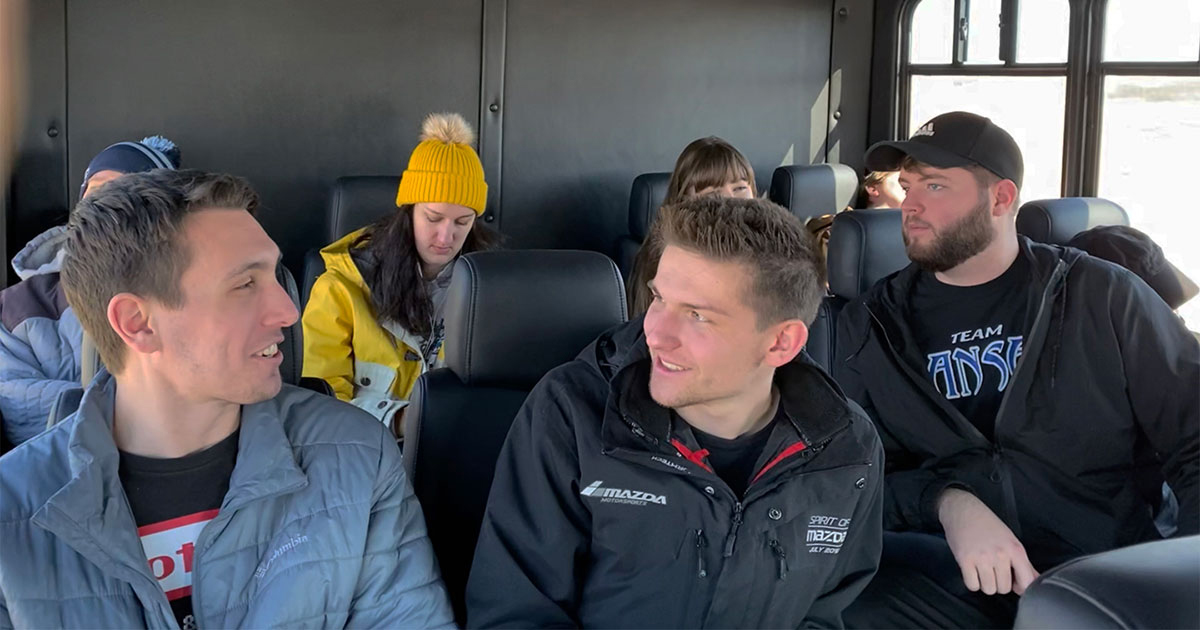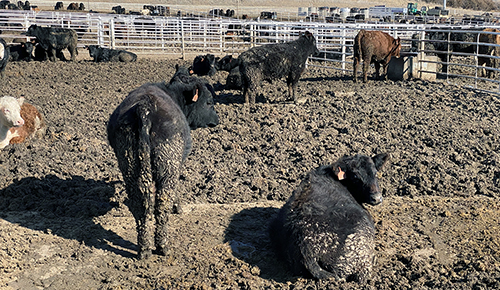Design students cast fresh eyes on animal health issue

LAWRENCE – When you deal with the nitty-gritty, mud-caked reality of animal health and production agriculture every day, it can help to step back from those trees and get a view of the forest.
That’s why veterinarian and Bayer Animal Health researcher Douglas Shane reached out to Greg Thomas, professor of design, and his students at the Center for Design Research in the University of Kansas School of Architecture & Design.
Shane wanted to see what ideas they might generate to improve the detection and diagnosis of bovine respiratory disease in cattle. The CDR had worked on previous projects with Bayer Animal Health, based in nearby Shawnee.
 “We believe that receiving input, innovation and ingenuity from these kinds of students may help us think of things we never would’ve dreamed of before,” said Shane, whose title is associate researcher for clinical efficacy. “They come up with ideas, and then we bring in our practical knowledge.”
“We believe that receiving input, innovation and ingenuity from these kinds of students may help us think of things we never would’ve dreamed of before,” said Shane, whose title is associate researcher for clinical efficacy. “They come up with ideas, and then we bring in our practical knowledge.”
One of Bayer’s “flagship products,” Shane said, is an antibiotic treatment for bovine respiratory disease, or BRD.
“Even as vets, it is challenging to accurately identify which cattle are and are not sick, and which of them need and do not need treatment,” he said.
Cows, after all, can’t tell you how they are feeling.
So, as Thomas explained it, feedlot operators in western Kansas and around the country employ “pen riders.” These are horse-mounted scouts who look for the telltale behaviors of cattle with BRD or other illnesses – like standing apart from the rest of the herd.
According to this protocol, suspect cattle are pulled from the herd to a barn and taken to a handling facility, where they are momentarily restrained to be safely examined to determine if they should receive treatment.
“When they get into the chute, it can still be dangerous to examine an animal,” Thomas said. “How do you put your hand in the chute with a diagnostic device and get it in the right position to perform a scan or evaluation?”
So as Shane and Thomas explained it, the challenge to the students at the CDR this semester was to apply technology to improve this process.
First, Shane arranged a field trip in February to visit research farms at Kansas State University and a nearby commercial feedlot to watch the systems in action.
“It was a personal goal of mine to get students with little to no background in agriculture into the production-agriculture environment,” Shane said. “This enhanced their understanding of feedlot production and gave them exposure to the challenges these producers face every day.”
Thomas said the students responded to both the task and the trip with enthusiasm.
“The charge was to design a better chute-side diagnostic machine using pre-existing technology,” Thomas said. “But we wanted to take a more aggressive role in thinking how we can keep the cows healthy.”
After Thomas reined in a couple of their ideas for improvements further back in the supply chain — during shipment and at the feedlot — the students have worked on Shane’s charge to improve chute-side tools.
They’ve been iterating nine ideas for that, Thomas said, including some that extend the device into the chute on a pole or wand.
“The problem is not just the ability to examine and scan the animal,” Thomas said. “The cows have heavy, muddy fur, and you have to get past all that, either by spreading out the hair and spraying them with alcohol or by shaving a spot, as they do now. We have worked to incorporate both processes into our device. … Some resemble a power washer. Then you spin it around, and the probe is on the other side.
“They are all ergonomically better and safer for the ranch hand.”
Shane and his group will be the final judges of that, though. The students’ presentation to Bayer is set for May 13 via Zoom.
Photos: Students from the Center for Design Research visited a cattle feedlot in February. Credit: CDR.